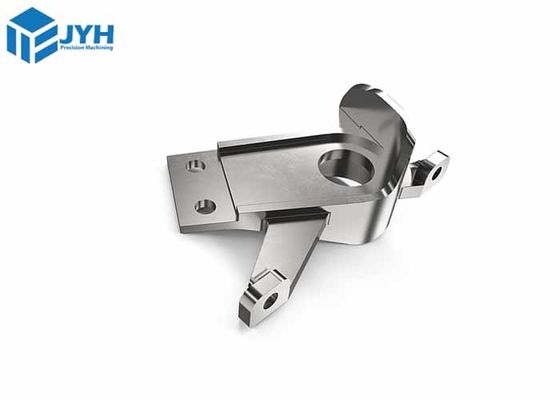Mastering the Art of Coordinating Hardware Colors for Full-Home Customization
Full-home customization has become a popular trend among homeowners. However, one of the most challenging aspects of this customization is coordinating hardware colors for all the different components in the home. To master this art, one must understand the psychology behind color choices and how they affect our moods and emotions. Color psychology suggests that certain hues can evoke specific feelings and emotions, such as red for passion, blue for calmness, and green for growth. Therefore, it's essential to select hardware colors that complement each other and create a cohesive overall look. This involves considering factors such as furniture, lighting, flooring, and artwork when selecting hardware finishes. Additionally, it's important to choose hardware finishes that are durable and easy to maintain over time. By following these guidelines and utilizing color psychology principles, homeowners can achieve full-home customization that is both visually appealing and functional. In summary, mastering the art of coordinating hardware colors requires an understanding of color psychology, consideration of various design elements, and attention to detail. With these skills, homeowners can create a beautiful and personalized home that reflects their unique style and personality.
When it comes to customizing your home, one of the most important aspects to consider is the color coordination of hardware. Hardware, such as hinges, handles, and locks, plays a crucial role in enhancing the aesthetics and functionality of your doors, drawers, and cabinets. In this article, we will discuss how to choose the perfect hardware colors that complement your home's overall design and create a cohesive look.
1. Define Your Home's Style and Color Palette

The first step in coordinating hardware colors is to determine the style and mood you want to achieve in your home. Do you prefer a traditional or modern look? Are you drawn to bold or neutral colors? Once you have a clear idea of your style, you can begin selecting hardware that aligns with it.
Some popular home styles include traditional, contemporary, minimalist, and industrial. Each style has its own set of color guidelines that should be followed when choosing hardware. For example, traditional homes often feature warm wood tones and brass hardware, while modern homes may lean towards sleek metal finishes and clean white or black accents.
1. Choose Hardware Finishes That Complement Your Wood Species
Another important factor to consider when coordinating hardware colors is the finish of your wood species. Different woods have unique characteristics that can affect the final color of the hardware. For instance, oak has a rich, warm tone that pairs well with bronze or brushed nickel hardware, while maple has a lighter, brighter hue that goes well with silver or stainless steel hardware.
By understanding the properties of your wood species and matching them with appropriate hardware finishes, you can ensure that your hardware coordinates seamlessly with your furniture and decor.
1. Consider the Lighting Conditions in Your Home

Lighting conditions can also play a significant role in determining the best hardware colors to use in your home. Natural light can bring out the warmth and richness of wooden tones, while artificial light can give metals a cool, metallic sheen. By considering the lighting conditions in your home, you can select hardware that looks great both day and night.
For example, if you live in an area with lots of natural light, you may want to choose hardware with a warm, earthy tone that won't lose its luster in direct sunlight. On the other hand, if you live in a dimly lit room, you may want to opt for hardware with a shiny metal finish that catches the light and adds visual interest.
1. Mix and Match Hardware Styles for a Unique Look
While it's essential to follow color guidelines and coordinate hardware finishes with your wood species and lighting conditions, don't be afraid to mix and match different hardware styles to create a unique look for your home. For instance, you could pair brass doorknobs with brushed nickel drawer pulls for a classic yet modern look, or use stainless steel cabinet hinges with copper handles for a rustic yet elegant feel.
By experimenting with different hardware styles and combinations, you can add personality and charm to your custom home while maintaining cohesion and consistency throughout your property.
1. Plan Ahead and Test Your Ideas Before Installation

Finally, it's important to plan ahead and test your ideas before installing new hardware in your home. This will give you time to make any necessary adjustments or changes to ensure that your hardware colors coordinate perfectly with the rest of your decor.
To test your ideas, you can create mock-ups of your furniture layout using online software or by creating physical cutouts of different pieces in paper or cardboard. This will help you visualize how different hardware colors will look in real life and allow you to make informed decisions about what works best for your space.
In conclusion, mastering the art of coordinating hardware colors requires a combination of creativity, knowledge, and attention to detail. By following these tips and experimenting with different styles and combinations, you can create a cohesive and stylish custom home that reflects your unique personality and taste. So go ahead and start exploring the world of full-home customization – your dream kitchen or bathroom is just waiting to be transformed!
Articles related to the knowledge points of this article:
Custom Hardware Manufacturers in Linyi
Custom Hardware for Doors and Windows in Shaoxing
Title: Customized Metal Laser Cutting Services in Henan: A Comprehensive Guide
The Customization of Hardware in Ruian, China



